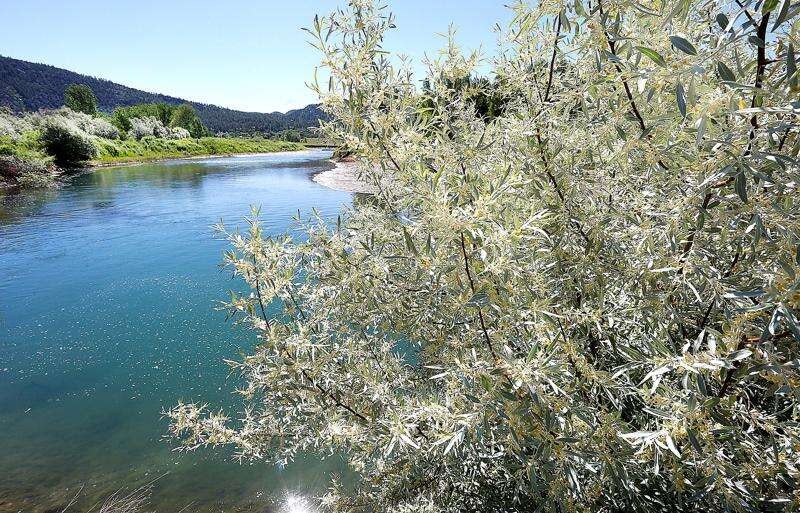Streambank Health and Invasive Vegetation SURVEY- Tamarisk/Russian Olive

Rivers Edge West and the Distritcs invite you to share your thoughts in a brief online survey. Click here for the web brower link.
Have you ever noticed tamarisk and Russian olive trees growing along the riverbanks? These two non-native, invasive species have become well-established in the White River basin, particularly in the riparian zones - those vital areas closest to the river. Their spread poses a growing concern for the health and biodiversity of the local
ecosystem.
If you’re interested in managing tamarisk or Russian olive on your property, there are a variety of effective tools and techniques available. For smaller patches, trees can be cut using a chainsaw or handsaw followed by herbicide to the stump or directly to the leaves of smaller trees (be sure to follow the herbicide label instruc-
tions!). For larger infestations, heavy equipment may be necessary to mulch the trees or remove them completely - roots and all! The most successful removal projects pair herbicide with a long-term management plan, such as re-planting or seeding desirable plants to prevent regrowth.
RiversEdge West is a nonprofit organization which, along with partners, has projects in Rio Blanco County that include removing the tamarisk and Russian olive and replacing them with native plants and pasture.
RiversEdge West and the White River and Douglas Creek Conservation Districts would like to build on these projects and support landowners who are interested in managing tamarisk and Russian olive on their land.
We will be hosting a field tour and workshop in September about invasive tamarisk and Russian Olive. Stay tuned for more information.
